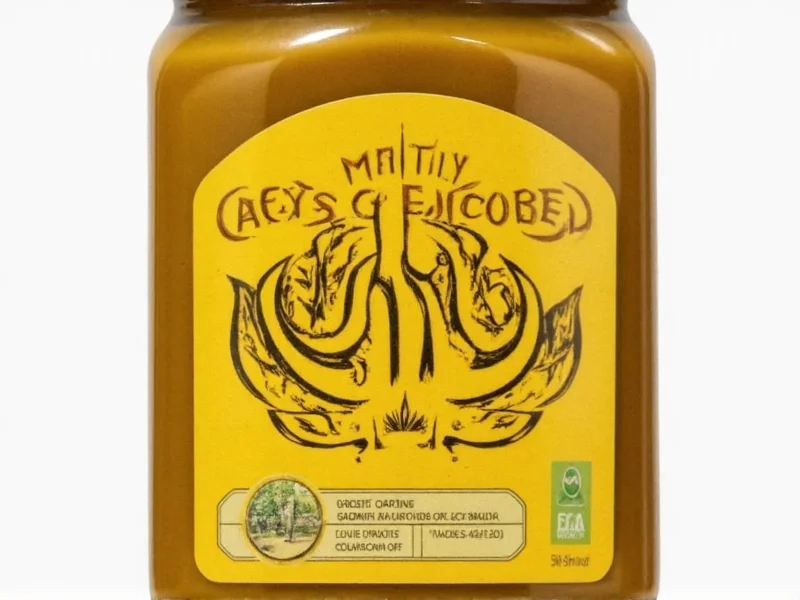Understanding what gives mustard its distinctive flavor and texture starts with its fundamental components. The magic of mustard happens through a simple biochemical reaction when mustard seeds meet liquid. This ancient condiment has been enjoyed for thousands of years across various cultures, with recipes evolving but core ingredients remaining remarkably consistent.
The Essential Mustard Seed Trio
Three primary mustard seed varieties form the foundation of all mustard types:
- Yellow/White Mustard Seeds (Sinapis hirta) - Mild flavor, pale yellow color, commonly used in American yellow mustard
- Brown Mustard Seeds (Brassica juncea) - Medium heat, used in Dijon and many European mustards
- Black Mustard Seeds (Brassica nigra) - Most pungent, often used in traditional recipes and Indian cuisine
The type of seed significantly impacts the final product's characteristics. Yellow seeds provide that familiar bright color and mild flavor, while brown and black seeds deliver progressively more heat and complexity. Many premium mustards blend multiple seed varieties to achieve balanced flavor profiles.
The Science Behind Mustard's Signature Heat
Mustard's distinctive pungency comes from a fascinating enzymatic reaction. When mustard seeds are ground and mixed with liquid, the enzyme myrosinase interacts with compounds called glucosinolates, creating the pungent allyl isothiocyanate. This same compound gives horseradish and wasabi their kick.
Several factors influence how hot your mustard becomes:
- Liquid temperature - Cold liquids produce milder mustard; warm liquids increase heat
- Acidity level - Vinegar and other acids slow the enzymatic reaction, preserving heat longer
- Resting time - Mustard develops full flavor after 1-2 days as flavors meld
- Seed preparation - Toasting seeds before grinding reduces pungency
| Mustard Type | Primary Seeds | Key Liquid | Distinctive Ingredients | Heat Level |
|---|---|---|---|---|
| American Yellow | Yellow | Vinegar | Turmeric, paprika | Mild (1/5) |
| Dijon | Brown | White wine | White wine, salt | Moderate (3/5) |
| Spicy Brown | Brown | Vinegar | Mustard flour, spices | Medium-Hot (4/5) |
| Whole Grain | Mixed | Vinegar/wine | Visible seeds, herbs | Variable (2-4/5) |
| English | Black/Yellow | Vinegar | Flour, sugar | Hot (5/5) |
Historical Evolution of Mustard Ingredients
Mustard's history spans millennia, with evidence of mustard seed use dating back to ancient India and Babylon. The Romans created the first "mustard" by mixing unfermented grape juice (mustum) with ground seeds, hence the name "mustum ardens" (burning must). During the Middle Ages, monasteries refined mustard production techniques, often using verjuice (sour grape juice) as the liquid component.
The 1800s saw significant innovation when Frenchman Jean Naigeon substituted verjuice with vinegar, creating what we now recognize as Dijon mustard. American yellow mustard emerged in the early 20th century when George Pullman added turmeric for color and a milder flavor profile that appealed to broader tastes.
Creating Your Own Mustard at Home
Understanding what is mustard made off empowers you to create custom blends at home. A basic recipe framework includes:
- 1/4 cup mustard seeds (single variety or blend)
- 1/2 cup liquid (vinegar, wine, or water)
- 1 teaspoon salt
- Optional: sweeteners, spices, herbs
For traditional preparation, soak seeds in liquid for 8-24 hours before grinding. The longer the soak, the milder the final product. For sharper mustard, grind dry seeds first, then add liquid. Most homemade mustards reach their peak flavor after resting for 24-48 hours as the flavors fully develop.
Experimentation is key to discovering your perfect blend. Try adding honey for sweetness, garlic for complexity, or smoked paprika for depth. The versatility of mustard ingredients makes it an endlessly customizable condiment that can elevate everything from sandwiches to salad dressings to marinades.











 浙公网安备
33010002000092号
浙公网安备
33010002000092号 浙B2-20120091-4
浙B2-20120091-4